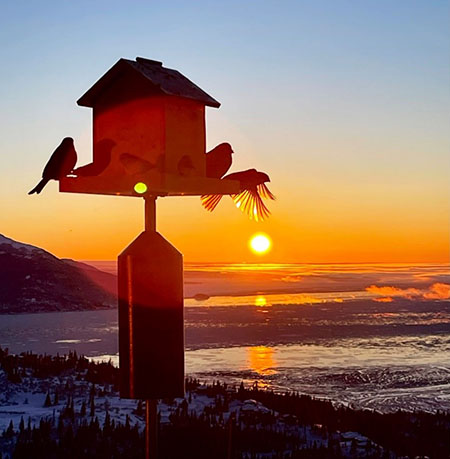Alaska Fish & Wildlife News
June 2024
Citizen Science Opportunities in Alaska

Are you on the lookout for opportunities for conservation action in your daily life? Citizen science and other volunteer opportunities allow you to contribute to scientific research, help your local natural spaces, gain new natural science and data collection skills, and improve your mental health. Whether you join a project or input data at your convenience, every little action can help!
Below are a few citizen opportunities available in Alaska.
Volunteer Opportunities
Most volunteer opportunities involve birds, since birds are usually fairly accessible to study and have large mobile populations that can be difficult to monitor without the person-power supplied by citizen scientists. To get some tips on becoming a birder, check out our article on becoming a bird nerd in Alaska.
- eBird: This free birdwatching citizen science data collection app is available anywhere in the world at any time. Simply bird in your area and input your data into the phone app or on your desktop to contribute to one of the biggest citizen science databases in the world.
- iNaturalist: Another free citizen science app, this program includes all flora and fauna and is particularly useful for plants and fungi. The University of Alaska Museum of the North sponsors an entomology program and a Plants and Fungi project through iNaturalist, all Alaska observations are summarized into one project.
- The Christmas bird count is hosted by Audubon every year and is the longest-running community science bird project in the country.
- Project FeederWatch is hosted by the Cornell Lab and runs November-April of every year. Survey backyards, birdfeeders, and community areas whenever you’re able to and contribute to the online database that tracks your local bird species.
- The Alaska Songbird Institute accepts Tree Swallow interns in the summer and volunteers for their banding station in Fairbanks. This can involve assisting with mist nets for banding birds, data entry, event planning, and more.
- Have you spotted any bats in the evening, or do you know of a bat colony nearby? Use the ADF&G online report form to log these bat sightings. This helps us keep track of bat sightings throughout the state and better map their ranges and movements while citizen science surveys of bat colonies are important to monitor populations.
Further conservation actions

While birds are a very accessible route to citizen science, their populations have been declining for several decades. Recent research shows that 1 in 4 adult birds is missing from the North American population, that’s a net loss of some 3 billion birds since 1970. 3billionbirds.org has compiled a list of 7 simple actions to help conserve bird species:
- Reduce bird window collisions by turning off lights at night during migration season in the spring and fall and putting decals on your windows to deter birds. Find more details at this website.
- Keep house cats indoors.
- Reduce lawn area and plant native species.
- Avoid pesticides.
- Support bird-friendly coffee that preserves habitat.
- Reduce plastic use, prevent bird habitat pollution.
- Citizen science: share your birdwatching results.
Subscribe to be notified about new issues
Receive a monthly notice about new issues and articles.
